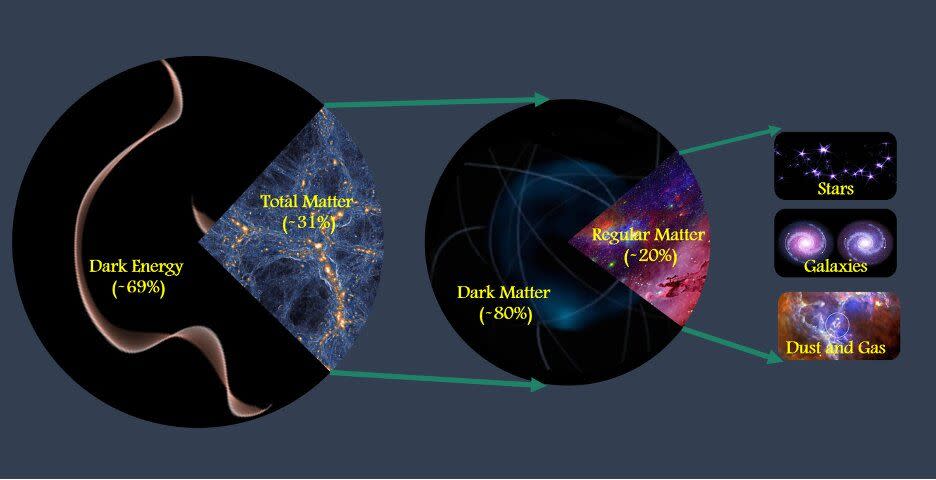How Much Matter Is in the Universe? Scientists Finally Find the Number

Using robust modeling, researchers have a new, more accurate percentage of total matter in the universe.
The scientists arrived at 31.5 percent matter, with the rest being made up by a variety of spooky ingredients at a distance.
The new number marries disparate theories as well as other disciplines' measurements.
Scientists say they’ve calculated an answer to one of the thorniest questions in all of cosmology and physics: how much matter is in the universe? To find the best answer, the University of California, Riverside researchers combined robust mathematical models with existing knowledge of galaxy clusters, which helped them find the most correct middle ground between existing, conflicting scholarly estimates.
🌌 You love our badass universe. So do we. Let's explore it together.
Why hasn’t anyone made a secure estimate yet? Well, the researchers explain:
“The discrepancies or tensions among these various studies is basically dependent on the accuracy of cluster mass estimation. Cluster mass can be calculated from cluster dynamics using the virial mass estimator [and other methods]. It can be also estimated from other observables which scale tightly with cluster mass. Generally, most of these methods introduce large systematic uncertainties which limits the accuracy of estimating cluster masses.”
Cluster mass is a key part of making this calculation. “Because present-day galaxy clusters have formed from matter that has collapsed over billions of years under its own gravity, the number of clusters observed at the present time is very sensitive to cosmological conditions and, in particular, the total amount of matter,” UC Riverside said in a statement.
To resolve the cluster mass estimation discrepancies, these researchers underwent a series of steps. First, they made a precise new model for predicting the mass of a galaxy cluster by using the galaxies that orbit it. Then they ran every available galaxy cluster, observed by the Sloan Digital Sky Survey, through their new modeling tool. (Think about designing a calculation in Excel and then applying it to a whole column of inputs. Satisfying.)
What results is a percentage—about 31.5 (plus or minus a margin of 1.3 percent standing in for the statistical certainty)—representing the amount of matter present in the mass of the universe. That number is very near, but different than, many solutions found using the previously described methods. Like calculating digits of pi, this question is ongoing. And in addition to marrying existing calculation methods, the new model has another major advantage.
🚀Our Favorite LEGO Rocket Kits
“This is the first use of the galaxy orbit technique which has obtained a value in agreement with those obtained by teams who used noncluster techniques such as cosmic microwave background anisotropies, baryon acoustic oscillations, Type Ia supernovae, or gravitational lensing,” coauthor Gillian Wilson said in the statement.

As the values from different methods coalesce, experts in all fields are more able to compare and share methodologies and draw meaningful conclusions.
So what’s in the other nearly 70 percent? Well, it’s dark energy and other yet-unobserved phenomena. Having a firm number in hand can also help scientists who look for ways to identify dark matter and energy.
You Might Also Like


